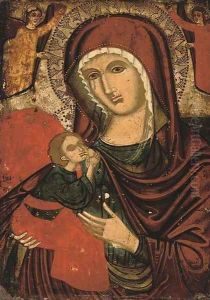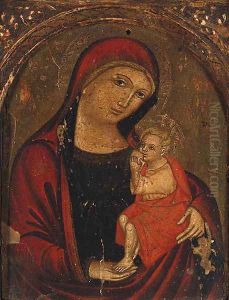Italo-Cretan School Paintings
The Italo-Cretan School refers not to a single artist but to a significant artistic tradition that flourished from the late 15th century through to the 17th century, merging Italian Renaissance techniques with the Byzantine traditions of Crete. This fusion of styles was primarily driven by the cultural and political landscapes of the time, as Crete, known then as the Kingdom of Candia, was a part of the Venetian Republic. The island served as a vibrant crossroads between the East and West, facilitating the exchange of artistic ideas and techniques.
Artists of the Italo-Cretan School are renowned for their icon paintings, which exhibit the refined, detailed features typical of Byzantine art, yet incorporate the perspective, anatomical accuracy, and emotional expression characteristic of the Renaissance. The most famous artist of this school is undoubtedly Domenikos Theotokopoulos, better known as El Greco. Born in Crete in 1541, he trained in the traditions of the Cretan School before moving to Venice, then Rome, and finally settling in Spain. His work, while initially deeply rooted in the traditions of the Italo-Cretan School, evolved into a unique style that profoundly influenced the development of Western art.
The Italo-Cretan School's icons were highly sought after across Europe, serving both religious and decorative purposes. These works were often characterized by their gold backgrounds, a holdover from Byzantine conventions, which highlighted the figures' divine nature. Additionally, the use of chiaroscuro and sfumato techniques, learned from Italian masters, added depth and realism to these religious scenes.
Despite its influence, the Italo-Cretan School began to decline in the late 17th century as the center of artistic innovation shifted towards Western Europe. However, its legacy endured, particularly through the work of El Greco, whose dramatic and expressive style foreshadowed the Baroque movement and continued to inspire artists for generations. Today, the Italo-Cretan School is celebrated for its significant contributions to the Renaissance and its role in bridging Eastern and Western art traditions.

